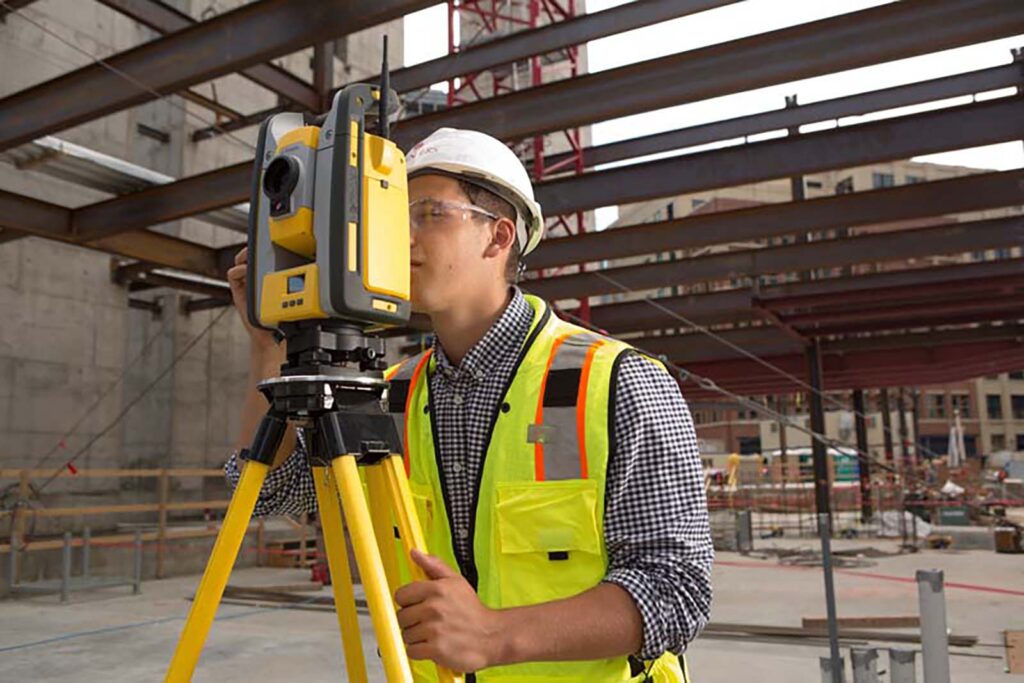Last month, we calculated that the cost of wet weather due to lost productivity, repeat visits and wasted trips could be in the region of £20,000 per year for the ‘average’ land surveying practice*.
Not all brands of surveying equipment work well in the rain, and with the UK averaging 161 days of wet weather a year, that’s a lot of wasted journeys and repeat visits. And if there’s one thing we hate at KOREC, it’s waste and inefficiency.
So, with this is mind, we decided to do something rather bold. We teamed up with ATR Shield to give away 50 total station shields, free of charge, to the 50 surveyors who gave us their most convincing reason for needing one.

And boy did you deliver! We received over 150 requests from across the nations. From the tip of Cornwall to the top of Ireland, from the Welsh valleys to Brixton – and your reasons made for fascinating reading. Here’s just a selection of your comments for why you desperately need a shield for your soggy total station;

Trimble to the Rescue!
At KOREC, we’re all about empowering our customers with the solutions they need to get the job done, with the minimum of fuss. After all, the slogan ‘Do It Once, Do It Right, Do It Now’ was a former company motto of ours!
That’s why we are so proud to provide solutions that are built for all weather conditions – come rain, shine – or even sleet and snow!
Trimble S Series total stations are world renowned for their reliability, their accuracy, and their robust nature in all weather conditions – no shields needed for this one!
Right now, we are offering over 20% off the Trimble S5, along with all the kit you need;
- Trimble TSC5 controller
- Access software (General Surveyor)
- Trimble Sentinel track & retrieve app
- Prism
- Telescopic pole
- Tripod
If you’d like to find out more about this bundle, contact your local KOREC consultant, or use the details below;
Call UK Sales: 0345 603 1214
Call Ireland Sales: 01 456 4702
For anything else, view our contact page.
*See previous blog ‘Don’t Let Rain Stop Play’ for full breakdown of the numbers
We’ve all heard of the saying ‘a little bit of rain won’t hurt’, but when it comes to your land survey kit, is it true?
Being the stats nerds that we are, we decided to run the numbers to see how much your soggy survey kit is really costing you.
Picture the scene. You’re out on a land survey or set out job with your total station, when the skies darken, the wind picks up, and the heavens open. You’ve got two choices – you fashion a DIY cover out of spare bits and bobs, or, if you’re like us, you make a dash for the van, grab a coffee to keep warm and dry, and wait for the rains to subside.
If we lived in the Med this may not be such an issue, but here in the UK it rains an average of 161 days of the year – that’s almost half of the time!
That’s a lot of days wasted sitting waiting for the skies to clear – or risking damaging kit that you know isn’t too fond of water ingress. We’ve even heard tales of folk desperately drying off their kit with hair dryers in the back of the van!

Running the Numbers
So, we decided to run the numbers to see exactly how much all of this wasted time could be costing you.
Over the last two decades, the UK has averaged 161 rainy days each year, 44% of the days. When it comes to working days (assuming you’re not a workaholic and enjoy the odd weekend and holiday each year) there’s roughly 240 days of working per year, which means a potential for 106 ‘rainy’ working days.
With the average land surveyor costing around £120 a day*, and assuming that on the rainiest of days you’re losing around 3 hours of productive time packing away kit, returning to the van, sitting in the van (not to mention getting the hair dryer out) we reckon the daily loss is around £48 per rainy day.
But, it gets worse. That ‘lost’ 3 hours of work still needs to be completed on a dry day, meaning another trip to site, another mileage expense, and another £48 gone. This second trip to site also means that other survey work, for other clients, has to either be rearranged, pushed back – or worst of all, lost.
All in all, we reckon that ‘bit of rain’ could be costing you the best part of £10,000 per surveyor over the course of a year!

Of course, the financial cost is just one element.
Every time rain stops survey, it shortens the timescale for getting the job done. Not only does this add time pressure to the job, it cause severe reputational damage to your business, straining relations with your client, as well as threatening your competitive edge when it comes to bidding for other work.
Dry your Eyes
If those figures brought a tear to your eye, don’t be concerned – there is another way!
We’ve put together the #WinterReady land survey package which has everything you need to get your survey work completed – come rain or shine.
Featuring the robust Trimble S5 with active tracking, the new TSC5 controller, a license for Trimble Access (General Survey) and more, our #WinterReady bundle gives you all you need to keep on working thru’ the wind and rain.

If you’d like to find out more about this bundle, contact your local KOREC consultant, or use the details below;
Call UK Sales: 0345 603 1214
Call Ireland Sales: 01 456 4702
For anything else, view our contact page.
*Based on figures from Reed.co.uk, assuming an annual salary of £30,518 and a working week of 37.5 hours, we obtained a figure of approximately £117 per day for a land surveyor, or £16 per hour.
How would you like to complete five times the amount of work, with just 1 operative?
More construction contractors are realising the value of visual setting out with robotic total stations. They’re seeing firsthand the gains in speed, efficiency, and accuracy. These benefits translate to reductions in rework, schedule delays, and other costly problems, all of which contribute to a robotic total station’s ability to pay for itself many times over.
What is Visual Setting Out?
But not all robotic total stations are made the same. While prism pole layout is the norm, some robotic total stations also offer a laser pointer. Using a laser is referred to as visual setting out, and it works especially well in structures and buildings that are already erected. When you use a robotic total station that allows you to do both prism pole layout and visual layout, you get the ultimate in flexibility and versatility. Here are five reasons to take a closer look at visual setting out.
Reason 1 – SPEED
When conditions permit the use of a laser, you’re able to speed up the setting out process considerably. You can turn on the laser and stand back as it automatically points and measures, reducing the time needed to position and locate the prism pole. Integrated software in the robotic total station, like Trimble FieldLink, guides you to each point and allows you to switch between surfaces, such as from the floor to the ceiling. You can eliminate extra steps, which cuts the time needed to complete set out significantly, while also gaining greater precision.
Reason 2 – ACCURACY
To get an accurate measurement with a prism pole, the pole needs to be perfectly plumb. Even a slight misplacement could produce a measurement that’s a few cm off. This type of human error is difficult to avoid when you’re relying on manual processes. But when you rely on Trimble’s patented visual set out technology to let the robotic total station do the adjustments and calculations for you, you can achieve much greater accuracy.
The precision of visual set out is especially beneficial for MEP contractors. Pipes and floor drains, for example, have to be accurately placed to drain correctly and pass inspection. Electrical work, HVAC, and sprinkler systems have to be placed accurately at the right elevations to clear other systems and avoid clashes. With the accuracy the laser provides, you can have greater confidence that your work will be set out and installed correctly.
Reason 3 – EFFICIENCY + REDUCTION OF PERSONNEL
Manual setting out is a time-consuming process that can take weeks or longer depending on the size of the project. It also requires that you have enough pros available to complete the work—a challenge given the construction skills shortage. With a robotic total station, though, only a single operative is needed to operate the instrument, whether using the prism pole or the laser. And because of the automated capabilities of the laser, fewer steps are needed to set out points, which significantly reduces the amount of time needed.
In fact, in many cases, you can complete 5 times the amount of work with one person. You’re able to deploy the setting out resources you have more efficiently and across more projects.
Reason 4 – SAFETY
Busy jobsites tend to be full of potential hazards, and performing set out in the midst of these hazards can be risky. With the visual setting component of a robotic total station, you can shoot the laser over 100 meters, which means you don’t have to physically make your way across the jobsite to measure a location. You’re able to avoid trip hazards or other potentially dangerous areas. You can also reduce the use of ladders, which pose one of the greatest safety risks to construction workers.
Reason 5 – COST & ACCOUNTABILITY
Because you can perform setting out more quickly with the laser, you’re more likely to meet the project schedule. And any time you can stay on schedule, you’re improving your likelihood of staying on budget. In addition to performing set out, a robotic total station also allows you to create a record of work performed. Should you receive an RFI or have to resolve a dispute over charges, you can reference this documentation to show what you did and why. This same feature lets you quality check your work as you go so you can identify and resolve problems before they turn into profit-robbing rework.
See our full range of Robotic Total Stations for Construction, and other BIM tools.



